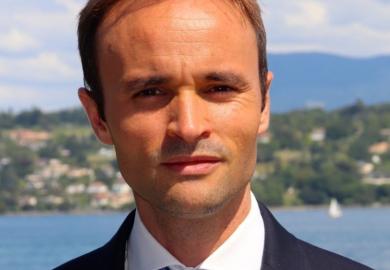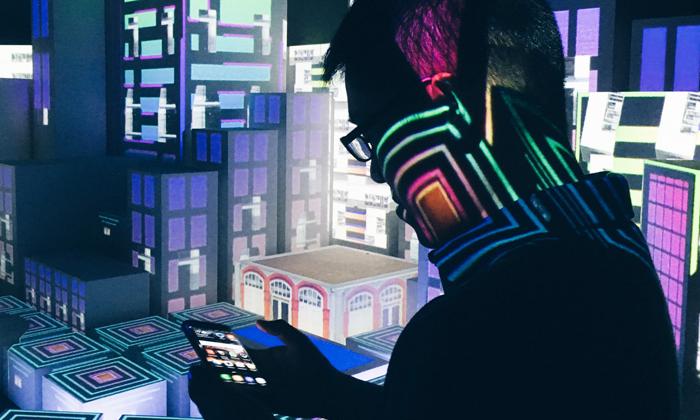Debunking myths around digital peacemaking
Exploring the impact of digital technology on conflict dynamics and peace operations | Jonathan HarlanderPeacemaking can sometimes be a conservative field. One area where this conservatism is apparent is the use, or non-use, of digital technologies. Favouring face-to-face interactions and emphasising the need for discretion, peacemakers have generally been reluctant to use digital technologies which they perceived as unsafe and too complex. For example, three years ago, a senior mediator interviewed for the publication Peacemaking and new technologies noted that due to the sensitivity of his work, he was “almost anti-technology” (here, p.39). Yet, irrevocably, the field of peacemaking is becoming more and more digitised.
The Covid-19 pandemic has strongly contributed to this phenomenon. Faced with a dilemma between suspending operations and adopting digital technologies to ensure the continuation of dialogues, many peacemakers have opted for the latter. Today’s peacemakers, from Colombia to Libya, Nigeria to Myanmar, will use instant messaging systems, social media or online collaboration tools on a daily basis. Meanwhile, a new generation of peacemakers is ever more creative in developing and adopting technologies to solve age-old practical challenges of dialogue efforts.
But much remains to be done, in particular in terms of building peacemakers’ digital literacy, training them on online facilitation, considering the integration of digital solutions during the process design phase of dialogue efforts and developing adequate technologies to address peacemakers’ specific needs.
More generally, the field of peacemaking ought to develop and integrate digital expertise to unlock the benefits of such tools in dialogue efforts. One obstacle standing in the way of leveraging this potential are persistent myths about the use of digital technologies in peacemaking. This article lays out three of these myths, and outlines recommendations on how best to leverage the opportunities digital technologies create.
Myth 1 - Digital technologies are complicated to use
Digital technologies have generally been perceived by mediators and mediation support actors as requiring advanced skills and expertise. In reality, most technologies that are currently used in peacemaking are off-the-shelf and relatively easy to master. Video-conferencing systems are a case in point. Forced to engage remotely during the Covid-19 pandemic, mediators have been quick to adopt Zoom, Teams or Pexip to continue working with conflict stakeholders.
Mediators generally do not need advanced technical skills, as they are not the ones developing such technologies and even the most tailor-made tools are often quite simple for the end user. In addition, when necessary, experts can be brought on board to support the development and integration of digital technologies, through strategic partnerships with technology companies for example.
In 2020, in the framework of FemWise-Africa’s virtual activities, CMI commissioned the development of a dashboard allowing the organisation to easily gift mobile phone data to conflict stakeholders wishing to participate in online meetings. The dashboard was developed by Zippie, a Singapore-based company, and allows recipients to participate without having to pay for the mobile data needed to join online meetings. The development of the dashboard was overseen by CMI’s African Union and Digital peacemaking project teams, and it did not require technical skills on CMI’s end for its development.
Myth 2 - Digital technologies are a silver bullet
Digital technologies are at times expected to resolve complex matters by their mere adoption. In reality, digital technologies do not constitute a peacemaking solution in and of themselves. Political issues underlying conflicts are not solved by technology. Rather, digital technologies can support a process and create new opportunities for engagement and efficiency by reducing the logistical challenges inherent to the organisation of face-to-face interactions. Digital technologies are not meant to replace but to complement existing efforts through a hybrid approach combining traditional and digital methods.
Peacemakers ought to adopt a needs-driven approach.
To optimise the added value of digital technologies, peacemakers ought to adopt a needs-driven approach. Digital peacemaking requires the time and skill to identify particular needs in dialogue processes and to determine whether an existing or prospective digital solution could address that particular need. Ideally, digital peacemaking expertise ought to be embedded in dialogue efforts from the process design phase and support the integration of digital solutions, as well as the monitoring of challenges and opportunities related to their use. The source of the conflict will not be solved by digital technology, but the technology can be instrumental in solving practical challenges in bringing parties to the negotiation table and helping them reach an agreement.
Myth 3 - Digital technologies are a gimmick
While digital technologies do not constitute a silver bullet for peacemakers, nor should they be considered as a gimmick, paraded around without adding real value to peacemaking efforts. Naturally, digital technologies will be perceived as such if they are developed in a vacuum, detached from the realities of dialogue and mediation. While it is important to explore the potential of technologies by investing in their development, a strong emphasis should be invested in ensuring that the adoption or development of technologies is purposeful. The focus of digital technologies’ adoption should be to solve practical matters encountered by peacemakers and allow peacemakers to focus on the substance of the dialogue.
Peacemaking actors therefore ought to invest in dedicated digital support capacity.
To strike a balance between innovation, experimenting and a purposeful use of the right tools, peacemaking actors therefore ought to invest in dedicated digital support capacity. This is the path chosen by both international organisations with global operations such as the UN and smaller private diplomatic actors such as CMI. In January 2020, the UN’s Department of Political and Peacebuilding Affairs created the Innovation Cell, tasked with “helping the Department and its field presences to understand and explore, pilot, and scale new technologies, tools, and practices.” Similarly, CMI established the Digital peacemaking team in 2020, which aims to leverage the full potential of digital technologies to improve the practice of mediation and mitigate their potential adverse effects exacerbating conflicts or jeopardising peace processes. The project now supports CMI’s operations in identifying digital solutions to address specific needs, and invests in the development of technologies when off-the-shelf options do not exist.
Conclusion
Digital peacemaking is not some futuristic utopia. Peacemakers are in fact already using digital technologies, often without realising as much, because the expression “digital technology” is often fetishised and associated with technologies such as Virtual Reality, Artificial Intelligence or Blockchain, rather than the concrete tools powered by such technologies. One can expect that the recent surge in the adoption of such tools, although slowing down as the pandemic recedes, will continue to be normalised and for digital technologies to be further integrated in the mediator’s toolkit. One might add that the use of digital technologies is already intuitive for the new and upcoming generations of peacemakers.
To engage with digital peacemaking, the peacemaking community therefore ought to:
- Develop digital peacemaking support capacity to increase digital literacy and facilitate the integration of digital technologies in dialogue efforts.
- Develop partnerships with technology companies, who hold the technical expertise necessary for the development of digital solutions.
- Lead systematic monitoring of the use of digital technologies in peacemaking efforts to identify lessons learned, added value and results.
- Create spaces to share lessons learned and further reflect on the potential digital technologies hold for their operations.
Whether we want it or not, peacemaking is changing with the integration of digital technologies. Not leveraging their potential would constitute an opportunity loss and could affect the perennity of peacemaking actors.
Download article
IMAGES
- Author | Jonathan Harlander priv.
- Image "Futuristic Utopia" | Unsplash, Kelvin Yup

